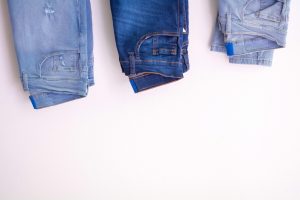Size Inclusivity Fails: Brands That Miss the Mark (and Fixes)
In recent years, there has been a growing movement to promote size inclusivity in the fashion industry. This involves designing and offering clothing for individuals of all sizes, rather than exclusively catering to the thin, “ideal” body type. While many brands have embraced this shift towards inclusivity, others have continued to miss the mark. In this article, we will delve into some of the biggest size inclusivity fails from popular fashion brands and explore potential fixes for these problematic approaches.
The Importance of Size Inclusivity
Before we dive into specific examples, it is essential to understand why size inclusivity matters. For far too long, the fashion industry has perpetuated harmful beauty standards and promoted the idea that only a certain body type is desirable. This narrow definition has not only been damaging to individuals of all sizes but has also limited the available options for plus-size customers.
Size inclusivity is about more than just offering a wider range of sizes. It is about embracing and celebrating diversity and recognizing that individuals of all shapes and sizes have the right to feel confident and stylish in their clothing. By promoting size inclusivity, brands can reach a broader audience and cultivate a more positive and inclusive image.
Size Inclusivity Fails
Lack of Representation
One of the most significant size inclusivity fails that many brands are guilty of is the lack of representation for plus-size individuals. This means not featuring plus-size models in their campaigns or only offering a limited range of sizes that do not cater to the needs of a diverse customer base. This sends the message that plus-size individuals are not a priority for the brand and can make them feel excluded and unimportant.
A prime example of this is H&M’s extended size range, which only goes up to a size 26. This leaves out a significant portion of potential customers who wear sizes 28 and above. By not catering to these sizes, H&M is missing the mark on size inclusivity and alienating a large segment of their customer base.
Inconsistent Sizing
Size inclusivity also means providing consistent and accurate sizing across all products. However, many brands have been called out for their inconsistent sizing, where a customer may fit into a size 14 in one product but a size 20 in another, despite both items being labeled as a “size 14”. This can be frustrating and discouraging for customers, especially when shopping online, as they cannot rely on their usual size to fit them correctly.
Brands like Forever 21 and Urban Outfitters have faced backlash for their inconsistent sizing, which not only shows a disregard for plus-size customers but also points to underlying issues with their production and design processes.
Limited Size Range for Certain Styles
An often-overlooked aspect of size inclusivity is the availability of certain styles in extended sizes. While a brand may offer a wide range of sizes overall, they may only offer a limited range for specific styles, leaving plus-size customers with fewer options. This can be especially frustrating when a plus-size individual finds a style they love but cannot purchase it because it is not available in their size.
Popular lingerie brand Victoria’s Secret has been criticized for this, as they do not offer larger sizes for some of their more popular styles, such as their bralettes. This not only excludes a significant portion of their customer base but also perpetuates the idea that certain styles are only for smaller sizes.
Potential Fixes
Representation and Diverse Sizing
The most obvious fix for brands that are missing the mark on size inclusivity is to feature more plus-size models in their campaigns and offer a more diverse range of sizes. This not only promotes inclusivity but also gives customers a better idea of how their clothing will fit and look on different body types. Brands like Aerie, Savage x Fenty, and Universal Standard have made significant strides in this area, and it has positively impacted their sales and image.
Consistent and Accurate Sizing
To address inconsistent sizing, brands must prioritize accuracy and consistency in their sizing across all products. This may require investing more resources into their production and design processes and conducting thorough fit tests on different body types. Brands like ASOS and Madewell have been praised for their accurate and consistent sizing, making them popular choices among plus-size customers.
Expanding Size Range for All Styles
When it comes to offering styles in extended sizes, brands should strive to make all their products available in the full range of sizes. This can involve working with vendors and manufacturers to ensure that all sizes are available for production and stocking up on popular styles in extended sizes. Brands like Eloquii and Torrid have been successful in this approach, providing a wide range of styles for plus-size customers.
In Conclusion
In today’s society, size inclusivity is no longer just a trend, but a necessary step towards promoting body positivity and celebrating diversity. Brands that fail to acknowledge the importance of size inclusivity not only risk losing customers but also perpetuate damaging beauty standards. By following the suggested fixes and prioritizing inclusivity, brands can appeal to a broader audience and make significant strides towards a more body-positive fashion industry.











